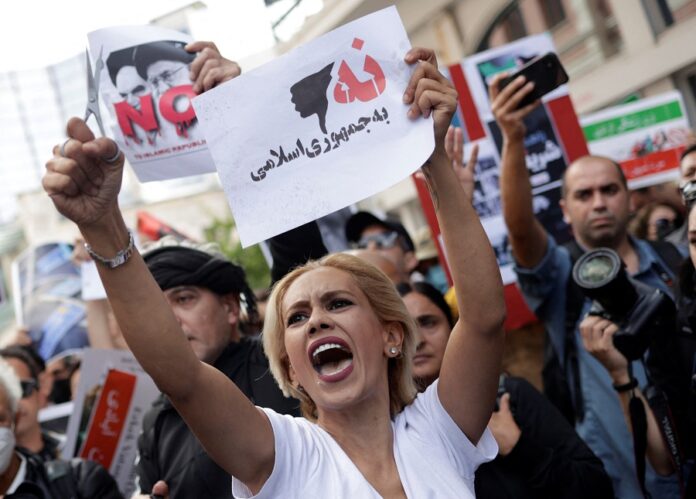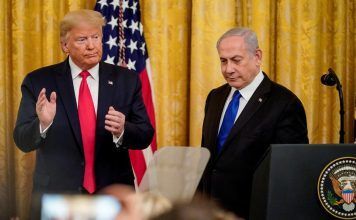
By Anna Mahjar-Barducci
[Anna Mahjar-Barducci is a senior research fellow at the Middle East Media Research Institute, or MEMRI, a non-profit established in the U.S. in 1998. MEMRI monitors and translates Arabic and Persian-language publications, radio and TV broadcasts, and religious sermons to inform the U.S. debate on the Middle East.]
The hijab is a political tool used by the Islamic Republic of Iran to keep a strict grip on its population.
Koranic sources recommend that women wear modest clothing, but no specific type of garment is prescribed. Yet the hijab is presented as a religious precept, even though it is in fact a political instrument.
In a famous speech in the 1950s, Egypt’s pan-Arabist President Gamal Abdel Nasser spoke of his meeting with the Supreme Guide of the Muslim Brotherhood and the latter’s request that the wearing of the hijab be enforced. “The first thing he asked was that wearing the hijab be made mandatory in Egypt, and that every woman walking in the street be required to wear a scarf. Every woman walking!” Nasser said.
This perfectly describes the age-old, widely practiced strategy of political Islam.
On a more personal note, back in 2007, I visited Tunisia, which at the time was still under the rule of the secular autocrat Zine El Abedine Ben Ali. The primary opposition and threat to his rule was represented not only by civil society, but mainly by the Islamists.
During my visit, a Tunisian scholar explained to me that many young women had started to wear the hijab as an expression of opposition to Ben Ali’s rule. He said that these women (many of whom came from the families of supporters of Tunisia’s first president, Habib Bourguiba) had decided to wear the hijab as a political statement, to dominate the visual space. In other words, every hijab seen in public was a clear and visible victory for the Islamists against Ben Ali’s secular dictatorship, and against the very concept of secularism.
The same tactic is being employed by the Islamic Republic of Iran. The hijab dominates the visual space as a symbol against secularization and Westernization.
For more than a year and a half, Iranians throughout Iran have been protesting against water and food shortage, unemployment, and a lack of respect for human rights. Afraid of losing control over the country, the Iranian regime has decided to strengthen its grip on the population even further. That is why Iranian President Ebrahim Raisi decreed a “hijab and chastity law” last August, adding a list of new restrictions to the official dress code for women.
Yet following the recent killing of Mahsa Amini — the young woman who was arrested and beaten to death by Iran’s “morality police” for not wearing her hijab “properly” —the demonstrations have erupted throughout the country with increased intensity. Women in particular have taken to the streets shouting the slogan “women, life, freedom,” and they are courageously burning their hijabs, which they have been forced to wear since the 1979 Islamic Revolution, and which are the most powerful political symbol of the Iranian regime.
In a gesture that recalls that of the young women in Ben Ali’s Tunisia, women in Iran are also defying the ayatollahs with their headscarves — in their case, by removing them.
Once hijabs are no longer seen on the streets, and once Iran’s women clear the visual and public space of this symbol, it will become clear that the Islamic Republic, its ideology, and its messages are about to crumble. Consequently, the role of women in this uprising against the regime is central. Dictatorships cannot survive, at least not for long, without their symbols. And no Islamic political symbol is more potent, oppressive and identifiable than the hijab.
Once the Iranian women remove the hijab, a pillar of Iran’s dictatorship, they will lead to the Islamic Republic’s eventual collapse.









